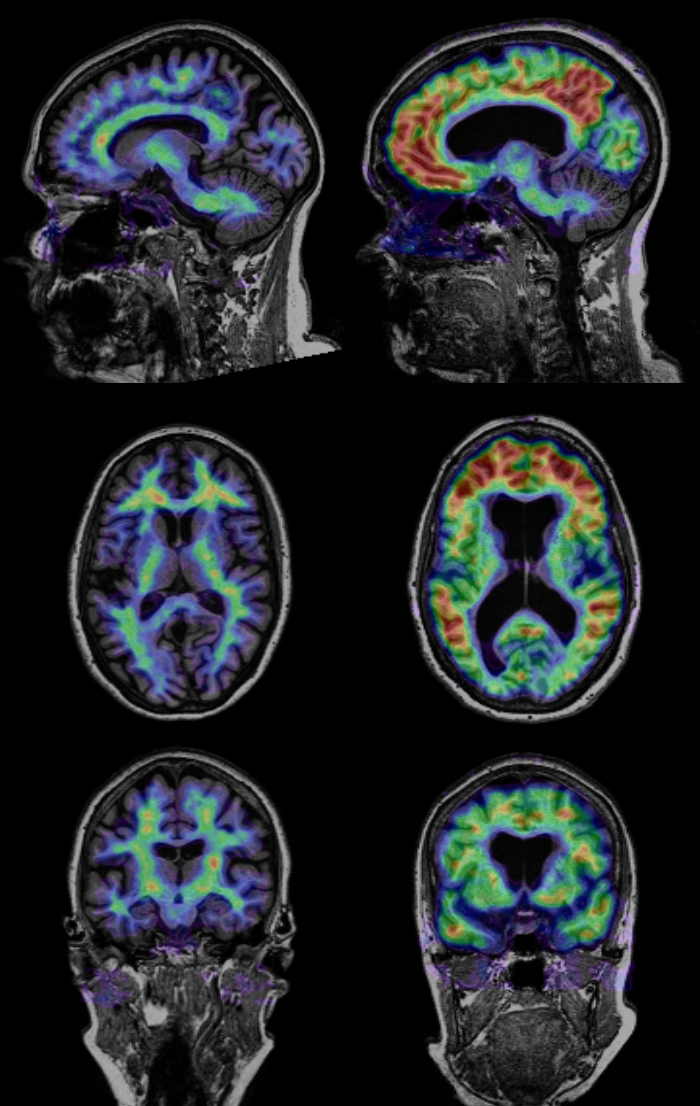
Meet Sam Burnham, one of the brains behind our Alzheimer’s research.
Dr Sam Burnham wants to improve our odds of a healthier future. Together with our Preventative Health and Computational Informatics teams, this research statistician is helping us better understand Alzheimer’s disease, the most common form of dementia.
More than 330,000 Australians currently suffer from dementia, and given our ageing population, this is set to triple by 2050. But not on Sam’s watch.
Using her mathematical wizardry, Sam is working to detect Alzheimer’s at its earliest stages, to give those at risk a better chance of receiving treatment before it’s too late.
The amyloid beta protein in a healthy elderly person (left) compared to an Alzheimer’s disease patient (right).
Her team has recently identified blood-based ‘biomarkers’ that are linked to the build up of a toxic protein in the brain called amyloid beta, one of the earliest indicators of Alzheimer’s disease.
Biomarkers are natural genes or hormones inside parts of our body like the blood or tissue that indicate early changes in health. They can be anything from body temperature – a biomarker of fever, to blood pressure which determines the risk of stroke.
“We’ve found a panel of nine biomarkers in the blood that can tell us how much amyloid beta is in the brain. This means we can detect the disease years before any dementia symptoms appear,” says Sam.
So what’s maths got to do with it?
“We started off with a few hundred different possible measurements from the blood, and then used sophisticated mathematical models to look at different combinations of these markers, and get down to the panel that we have.”
In the future, these biomarkers could be used in a blood test to make Alzheimer’s detection simpler, earlier and less expensive.
Sam has been investigating biomarkers for Alzheimer’s disease since 2009, when she joined us as an OCE postdoctoral fellow. Before that, she studied Chemical Engineering at Newcastle University in the UK, where she worked on reducing time to market in the pharmaceutical industry, which means putting new medicine on pharmacy shelves quicker.

It may take some time to combat Alzheimer’s for good, but Rome wasn’t built in a day.
“I love solving problems. Just give me a spreadsheet of data and a question to ask of it and I’m happy.”
A keen traveller, Sam has also spent time researching at Curtin University of Technology in Perth and Clarkson University in New York.
In fact, this year Sam is embarking on a new journey to Harvard Medical School, where she plans to expand her knowledge of Alzheimer’s disease even further.
For more information on careers at CSIRO, follow us on LinkedIn.


